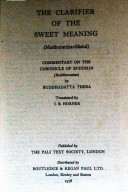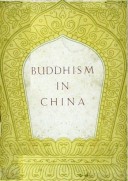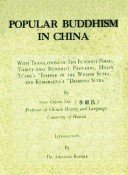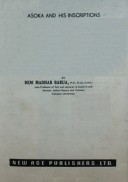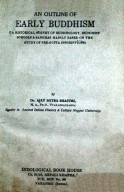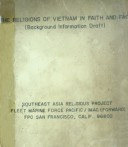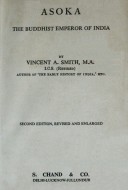Tìm Sách
Sách tiếng Anh-English >> The Clarifier of The Sweet Meaning
Thông tin tra cứu
- Tên sách : The Clarifier of The Sweet Meaning
- Tác giả : Buddhadatta Thera
- Dịch giả : Horner
- Ngôn ngữ : Anh
- Số trang : 453
- Nhà xuất bản : The Pali Text Society
- Năm xuất bản : 1976
- Phân loại : Sách tiếng Anh-English
- MCB : 12100000011633
- OPAC :
- Tóm tắt :
PREFACE
The Pali Text Society has been in existence for close on 100 years. Up to date, 1976, it has published translations of all the Pali canonical works except Papsambhidãmagga, Apadana, Yamaka, and part of Patthana. But translations of only four commentaries have been issued: those on Khuddakapãtha, Dhammapada, Dhammasahgani, and Kathãvatthu. To commemorate its centenary in 1981 the Society has established a Translation of the Commentaries (Atthakatha) Project. The object is to publish as many translations of these into English as possible as and when they become ready, and not waiting for the centenary year itself. I feel it a privilege that my translation of the Buddhavamsa Commentary (BvA) called Madhuratthavilasini or Clarifier of the Sweet Meaning (CSM) should be the first to go to press under this Project. That it was nearing completion before the Project was formed gave me an advantage over the other translators.
As this is so, I am taking the opportunity to make a few general remarks as briefly as I can, first about the sources of the Commentaries, then about their function, and lastly something about their methods. I hope by this means some guide-lines may suggest themselves for future research into commentarial structure and organization as a whole, not excluding investigation of specific differences or similarities such as may be found to exist between cty and cty or between one group and another group. BvA, Jatakanidana, VvA, PvA, CpA and ApA, for example, may be said to be more concerned with expounding legendary matters than monastic regulations (Vinaya), doctrinal themes and numerous other points (Sutta), or psycho-philosophical concepts (Abhi- dhamma).
Because the Commentaries form a highly important branch of Pali literature, fundamental to a precise interpretation and understanding of the Teaching, they have by no means failed to attract the attention of certain reliable authorities in the field of Pali studies. Prominent in this connexion is E. W. Adikaram wKo roughly divides his material into two groups: differences between Atthakathas and the Canon, and differences between one Atthakathã and another. Everything he says merits close study and consideration. Perspicacious and helpful too, though very much shorter, are observations made by Nãnamoli Thera on the exegetical apparatus and on the function of a cty. The less recent work of M. Winternitz and of B. C. Law, in both cases on more general lines and of considerable length, remains valid for some of the problems connected with commentarial origin, growth, purpose and contents.
In what follows I am dealing with the ctys on rather different lines, and the approaches to the commentarial methods I put forward below in Section III of this Preface are made on the whole from angles I have hitherto not seen discussed. But first, the sources of the ctys must be re-stated as, in spite of all that has been written about them, there still seems to be ignorance and misunderstanding. Secondly, the aim or object of the ctys likewise has to be stated again, principally to give due emphasis to the reasons and necessity for their compilation. Then, in Section III, some of the characteristic devices they use in the course of their clarifications are briefly examined. Not seldom these clarifications turn out to be remarkably instructive.
I Sources of the Commentaries
The production of the Commentaries in the form we have them now was undertaken in the main by Buddhaghosa and Dhammapala and to a lesser extent by Buddhadatta, to whom BvA is ascribed. All were bhikkhus, all lived in C5 A.C., and all appear to have been Indiana who came to the Mahavihãra in Anurãdhapura in Sri Lanka to pursue their translation tasks there with the consent of the resident monks. There may have been more than one Buddhaghosa and more than one Buddhadatta and it is possible there were at least four Dhammapãlas.
Strictly speaking, not one of these is the author of any commentary that has come down to us under his name. Rather is it the case they were translators and editors mainly engaged in reducing to a more acceptable and sophisticated order the material they found existing already in Sri Lanka as Commentaries. Probably emanating from India (perhaps even from the Buddha himself), these Commentaries had been brought to Sri Lanka by Mahinda in some form of Magadhi, there to be put into Sinhalese. And so they remained, some of them perhaps for about nine centuries, before being rendered into the language we now call Pali, as well as being organized and edited by the so-called commentators, Buddhaghosa and the others whose names the works now carry, but who in reality were translators and editors, not writers and original compilers. Buddhaghosa himself, or so we may believe, tells us as much in his introductory verses to each of the voluminous ctys on the four great Nikãyas, also in those on VA and Asl. To take the Nikãya ctys first, we find that he says:
“The Commentaries, recited at the beginning (First Council) by five hundred Elders and later recited again (Second and Third Councils), were brought to the Island of Sihala by Maha-Mahinda and later put into the Sihala language for the benefit of the Island-dwellers. Removing the Sihala language from them (the Commentaries) and rendering them into the beautiful language, free from defects, suitable to the style of the canonical texts, not contradicting the tradition of the Elders resident in the Mahavihara, lamps in the line of Elders, experts in decision, I will make the meaning clear, removing any repetitions, for the elation of good people and for the perpetuation of Dhamma.”
In introducing the Pali translation of the Vinaya Commentary, Buddhaghosa has said, as recorded:
“As this Commentary has been composed in the language of the Island of Sihala, it does not render any service to the bhikkhu-population overseas, therefore now I shall begin this Commentary in conformity with the style of the canonical texts … In beginning this exposition I shall base it on the Mahã-atthakathã and without discarding whatever are correct meanings and rulings that are given in the Mahãpaccarĩ and other famous Commentaries such as the Kurundi that can be admitted to the tradition of the Elders …
I shall therefore avoid incorrect ‘readings’ (scribes’ errors) handed down in these. From them, giving up only a different tongue and condensing protracted exegeses, not excluding any decision nor deviating from any textual tradition … (I shall expound the Vinaya)”.
Again, as noted by Mrs Rhys Davids, “ Buddhaghosa himself says in the introductory verses to the Atthasãlinĩ”:
“The Commentary on that Abhidhamma, at first (at the First Council) recited by Mahãkassapa and other sages and again recited later (at the Second and Third Councils) by the (other) seers, had been brought by the Elder Mahinda to this superb Island and put into the language of the Island-dwellers. Removing from it (the Commentary) the language of the dwellers in Tambapanni, rendering it into the faultless language which is in keeping with the style of the canonical texts, elucidating the decisions of the residents in the Mahãvihãra unmixed with and uncorrupted by the views of other sects, and taking what ought to be taken also from the Nikãyas and the Commentaries, I will clarify the meaning making the proficient delighted.”
It could not be more clearly stated that Buddhaghosa’s great concern was to reduce the mass of the ancient Commentaries to a systematic and more rational form, more readily understandable to a greater number of bhikkhus and that, apart from banishing the redundancies he found in them, he was resolved to adhere closely to their basic method of exegesis no less than to the teaching of the Elders, or Theravãda tradition, enshrined in them. He would then, only very rarely intruding his own opinion, translate them from Sinhalese into Pali, and that is what we have today as the Pali Commentaries…
 Facebook
Facebook
 Google
Google
 Google+
Google+
